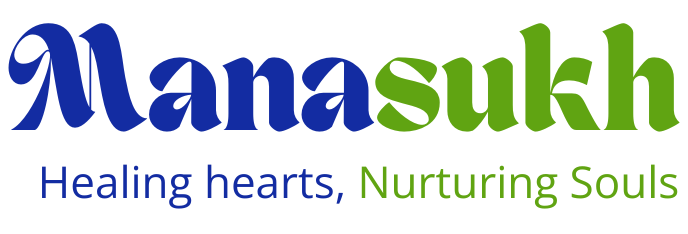Additional Information on Upper Mustang Trek with Muktinath and Lo Manthang
Upper Mustang Trek Cost
The Upper Mustang Trek cost generally ranges between $2000 to $3000, depending on the package inclusions such as permits, accommodation, meals, and guided yoga sessions. The major expenses include the restricted area permit for Upper Mustang, the ACAP (Annapurna Conservation Area Permit), as well as transportation costs from Kathmandu to Jomsom. This package by Manasukh includes daily yoga and meditation sessions, accommodation in tea houses, three meals a day, and trekking permits. Additional costs may include tips for guides and personal expenses like snacks, drinks, and souvenirs.
Upper Mustang Trek Route
The Upper Mustang Trek route begins with a flight from Kathmandu to Jomsom, from where the trek officially starts. The route leads through Kagbeni, a gateway to the restricted area of Mustang, and continues to Chele, Syangboche, Ghemi, and Tsarang, before reaching the ancient walled city of Lo Manthang. After exploring Lo Manthang, the trek passes through Muktinath, a sacred temple, before descending back to Jomsom for the return flight to Kathmandu. This route offers a mixture of arid landscapes, dramatic gorges, and high-altitude villages rich in Tibetan culture.
Upper Mustang Trek Difficulty
The Upper Mustang Trek difficulty is rated as moderate. The trek covers varied terrain, from steep ascents to flat arid valleys. Although it doesn’t require technical climbing skills, trekkers should be in good physical condition, capable of walking 5-7 hours a day. The yoga and meditation sessions are designed to help trekkers stay flexible and mentally centered. The highest point of the trek is Muktinath at 3,800 meters, where altitude may pose a challenge. Proper acclimatization is included in the itinerary to prevent altitude sickness.
Muktinath Trek Highlights
The Muktinath Temple is one of the main highlights of the Upper Mustang Trek. Located at 3,800 meters, this pilgrimage site is sacred to both Hindus and Buddhists. The temple complex is famous for its 108 water spouts, representing sacred waters in Hinduism, and the eternal flame that burns naturally from an underground gas source. Many pilgrims visit Muktinath to bathe in the freezing waters as part of a purification ritual. The spiritual energy at Muktinath is palpable, and combined with the trek’s yoga sessions, it offers a unique opportunity for spiritual renewal.
Upper Mustang Trek Best Time
The best time for the Upper Mustang Trek is from March to May and September to November. During these months, the weather is stable, with clear skies and mild temperatures, ideal for trekking and yoga sessions. In the spring, you’ll be greeted by blooming rhododendrons and green valleys, while autumn offers crisp, cool air and perfect views of the Himalayan peaks. The monsoon season (June to August) is also a viable option since Mustang lies in a rain shadow, but visibility can be limited. Winter treks are possible but come with challenges like snow and cold temperatures.
Important Things Not to Forget
When preparing for the Upper Mustang Trek with Muktinath and Lo Manthang, packing essential items for both trekking and yoga sessions will ensure a smooth, comfortable, and enriching experience. Here are some must-have items for the journey:
- Yoga Mat & Meditation Cushion: Bring a lightweight, foldable yoga mat and a meditation cushion to ensure comfort during your daily yoga and meditation sessions amidst the serene surroundings of the Upper Mustang region.
- Trekking Boots & Socks: Comfortable, waterproof trekking boots with good ankle support are crucial for the rocky and uneven terrains. Also, pack breathable, moisture-wicking trekking socks to keep your feet dry and blister-free.
- Warm Layers & Windproof Jacket: Mustang’s high-altitude climate can be unpredictable. Layering up with thermal wear, a warm fleece, and a windproof jacket is essential to stay comfortable as temperatures drop, especially during evenings and mornings.
- Sunscreen, Hat, and Sunglasses: With Upper Mustang’s strong sun exposure, even in cooler temperatures, high-SPF sunscreen, a wide-brimmed hat, and UV-protected sunglasses are vital to protect your skin and eyes from the harsh rays.
- Trekking Pole: A lightweight trekking pole will provide stability, especially when traversing steep ascents and descents. It’s also helpful for maintaining balance during long days of walking.
Equipment List for the Upper Mustang Trek with Muktinath and Lo Manthang
When embarking on the Upper Mustang Trek, packing the right gear ensures comfort, safety, and an enjoyable experience. Here’s a comprehensive list of essential items you should bring:
- Trekking Gear:
- Trekking Boots: Waterproof and well-broken-in boots to handle rugged terrains.
- Trekking Poles: Useful for balance on uneven trails.
- Backpack (40-50L): A durable pack to carry essentials.
- Sleeping Bag: A warm, 4-season sleeping bag suitable for cold nights.
- Waterproof Jacket and Pants: To stay dry during unexpected rain.
- Warm Layers: Fleece jackets, thermal layers, and insulated down jackets for cold weather.
- Yoga Essentials:
- Yoga Mat: A lightweight, foldable mat for daily yoga sessions.
- Meditation Blanket: For warmth during meditation in high-altitude areas.
- Comfortable Yoga Clothing: Lightweight, breathable, and moisture-wicking outfits.
- Personal Care Items:
- Sunscreen and Lip Balm: Protect your skin from strong sun exposure.
- Moisturizers: The high-altitude dry air can affect your skin.
- Personal Toiletries: Toothbrush, toothpaste, biodegradable soap, etc.
- Hand Sanitizer: For hygiene during the trek.
- Trekking Accessories:
- Sunglasses: UV protection for bright sun at high altitudes.
- Hat/Cap: A wide-brim hat for sun protection and a woolen cap for cold mornings.
- Headlamp: For evening walks or reading in the tent.
- Water Bottles/Camelback: Stay hydrated throughout the trek.
- Other Essentials:
- First Aid Kit: Basic medicines, band-aids, blister treatments, and altitude sickness medication.
- Portable Charger/Solar Charger: To charge electronics like phones and cameras.
- Snacks and Energy Bars: High-energy snacks for quick nourishment during the trek.
- Trekking Permits: Make sure to bring all required permits, including ACAP and TIMS cards.

